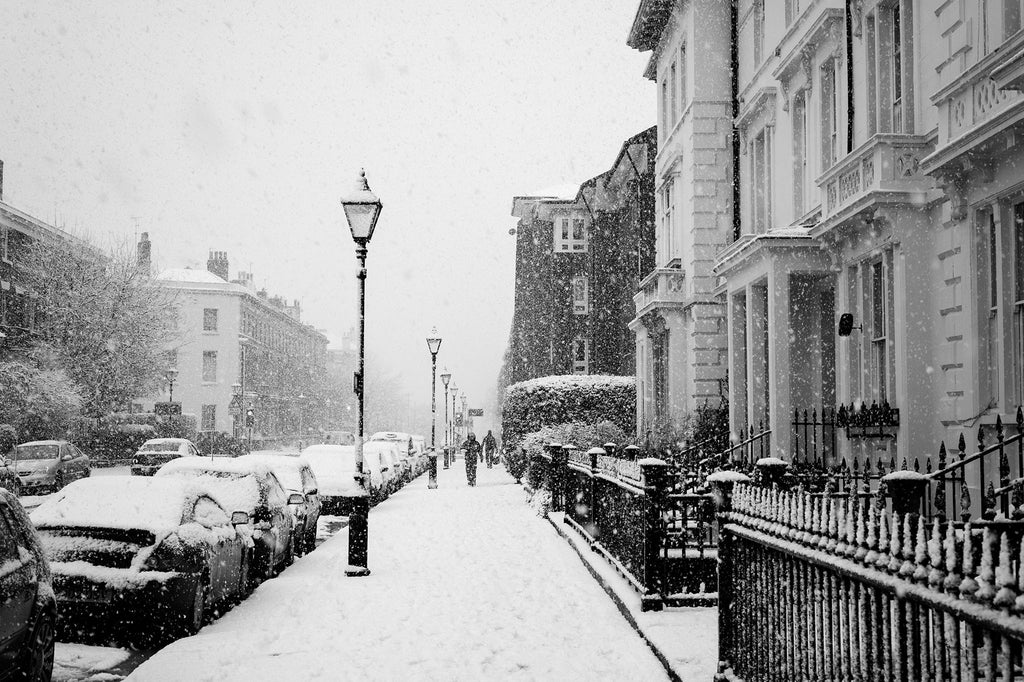From Poland to Gotham, Liverpool has served as the backdrop to many small and big screen blockbuster. Writer and producer Laura Brown looks at the architecture and spirit of the city to explore why it is much more than this: a character in its own right.
This article was first published in Dorothy's Studio Stories Magazine (Issue No. 1) in Autumn 2021.
LIVERPOOL OR ANYWHERE
−Words by Laura Brown
The best character actors are the ones that make the whole film work. They might not be star billing, their part might not be the biggest, but often they are the heart of the moment you remember. Think Alison Steadman or Stephen Graham, imagine thinking of Backbeat and not thinking of Ian Hart. The character actor is the soul, they are the narrative, the centre of the story and they bring it to life.
There is a versatility to being a character actor, an ability to pull on strings or to push buttons. It is the ability to work in any genre, make any story feel authentic and powerful. Perhaps there is a reason why some of the UK’s finest character actors come from Liverpool, the city itself has a malleable, flexible identity, both in its design and its personality that allows it to blend in with whatever expectation or need required of it.
As Liverpool has become the backdrop to more films and TV series, it becomes apparent that this quality of the city, its versatility, is ideal for production companies. The city is like a chameleon, becoming a character actor in itself for whatever narrative, location or inspiration a director or cinematographer needs to gleam from it.
Liverpool can be, and has been, anywhere. In Chris Bernard’s Letter to Brezhnev, the city is a bleak, dark and tough location. In Captain America: The First Avenger, Liverpool is New York’s Victorian docks of the 1940s. In Al’s Lads it is Chicago. In Fantastic Beasts, And Where to Find Them the city is 1920s New York.
Liverpool has been Gotham, more than once. It has symbolised power and grandeur, the seat of authority and government in War of the Worlds, musical heritage and joy in Danny Boyle’s Yesterday, it has been London, Poland and Southampton for Foyle’s War, and a sense of grandeur in Victoria. In Terence Davies’ Of Time And The City, the city is a character and a backdrop to a poetic exploration of the auteur’s life, faith, working-class childhood and sexuality.
 Image - Pete Carr
Image - Pete Carr
In the 1900s, Frank Woolworth, the founder and owner of the eponymous American store, was looking for the site of his first English outlet. He was planning to travel to the Midlands, but did not get further than Church Street. Liverpool, with its overhead railway, horse and carriages sharing the roads with newfangled motor cars, felt like his New York home as he stepped off the boat. Yet it was more than what was happening at street level.
Walking through the streets of the Commercial District, along past India House, St. Martin’s Bank and the Town Hall it must have felt like Wall Street. Church Street, at that period, still had St. Peter’s Church in front of Bluecoat, but on the side streets by Williamson Square, and the tight Georgian streets with high rise buildings, he felt a familiarity. When St Peter’s Church was demolished, Woolworths would replace it with a ‘Cathedral of Commerce’ opening in 1923.
Liverpool was a place where people would arrive and set about making it fit into their idea of home. It had expanded rapidly, and this is reflected in a city that is filled with different inspirations. The Palladian style of the Town Hall, the uniform individuality of the Grade II listed frontages on Castle Street. The neo- classical inspiration, from St George’s Hall, The Lyceum, The Oratory, St Bride’s Church, the Medical Institution. Liverpool is a city built to say ‘here I am’ but it absorbs inspiration from every corner of the globe. It is fitting that the city’s malleability to allow people to want to use architecture and design to create their own narrative two centuries ago has become part of its identity in the 21st Century.
As a film location, Liverpool’s very strength is its flexibility - that it can be anywhere, at any time. It allows production crews to find locations that help them turn 21st-Century streets into wartime terraces, daubing walls with poster and cars of yesteryear parked kerbside. It’s also used for the filming inside luxury apartments in one site, and then street level in another country entirely. Liverpool’s adaptability comes from its willingness to absorb, and this is what has made it so attractive for an industry that needs locations to be backdrops, but to become a character, even if it is set a century ago.
The sets are always a moment of excitement for the city itself. Watching Batman hang from the side of the Liver Building, or crowds of extras gather on the steps of St George’s Hall, there is a frisson of excitement. Liverpool is happy to be something for everyone, the city is just glad you are here at all.
LAURA BROWN IS A WRITER, PR PROFESSIONAL AND PRODUCER BASED IN LIVERPOOL
This article was first published in Dorothy's Studio Stories Magazine (Issue No. 1) in Autumn 2021.

